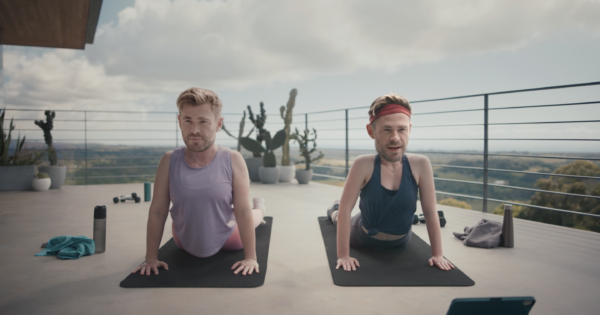See how Budweiser is bringing Clydesdales back to the Super Bowl
The iconic horses return to the big stage in a commercial directed by Chloé Zhao that also stars a yellow lab.

Budweiser is returning to a familiar emotional formula as it comes back to the Super Bowl after taking last year off—an ad that stars a Clydesdale and a dog.
The spot, directed by Academy Award-winner Chloé Zhao and from VaynerMedia, shows a Clydesdale galloping through an open Western landscape before tripping on a barbed wire fence, suffering a leg injury. A yellow lab looks on, barking its concern. A stableman and vet nurse the horse back to health (and drink Budweisers in one scene). The final scene shows the Clydesdale charging out of its stable, with the dog running to greet it, as the phrase “In the home of the brave down never means out” appears onscreen. The soundtrack includes a rendition of the National Anthem from guitarist Gary Clark Jr.
The ad, released today as an extended 60-second cut, will run as a 30-second version in the game.
The storyline is meant to serve as a parable for America, as the nation attempts to recover from pandemic-induced hard times. The brand wanted to “make sure that this message of American resiliency, told through the Clydesdales, really came through,” said Daniel Blake, group VP of marketing for Budweiser and value at the U.S. division of Anheuser-Busch InBev. “The Clydesdales—it’s a symbol of America and it’s a symbol of American strength. And through this story we are able to tell this unifying message, hopefully bringing America together.”
While that might sound like a cliché, Budweiser has proven over the years that it is fertile consumer territory for the brand and its iconic Clydesdales, especially for Super Bowl ads. For instance, in the 2002 game, Bud hit the right post-9/11 note with a spot that showed the horses crossing the Brooklyn Bridge and bowing in view of where the twin towers once stood.
Dogs have frequently been part of the story: cute puppies took center stage in Super Bowl ads from Anomaly and director Jake Scott in 2015 and in 2016. They drew tons of social buzz, but inside AB InBev, executives grew skeptical if they worked from a business perspective. "Those ads I wouldn't air again because they don't sell beer," then-U.S. marketing VP Jorn Socquet said in a 2015 interview with Bloomberg.
See Budweiser's prior ads in Ad Age's Super Bowl Ad Archive.
The Clydesdales took on more of a supporting role in ensuing Super Bowls and were absent from the 2020 game. Then last year, Bud sat out the game entirely for the first time in 37 years, saying it would reallocate the spending to support the Ad Council’s coronavirus vaccine public education campaign.
“We felt like that was a really important decision for the brand at that point last year to make sure that we were doing our part,” Blake said. “When we looked at this year we decided it was the right time to return back to the big stage, but we wanted to make sure we did it with a message of hope and resiliency for the country.”
The brand is routinely peppered with questions on social media about the status of the Clydesdales, so the ad was a “great way to reintroduce the Clydesdales and the dog in a really unique way,” Blake said.
But questions remain about how effective the Clydesdale-dog formula is in selling beer; Budweiser’s market share has been declining for decades, although many factors outside marketing have played a role, including changing taste preferences of drinkers and the rise of alternatives including craft beers, hard seltzers and canned cocktails.
For a time, Budweiser used the Super Bowl to plug a product message. In 2015, one of its ads used the phrase “macro beer” as a way to differentiate it from craft beers. Then it went to more of a corporate message in some years, including an ad in 2018 that plugged a philanthropic water giveaway program.
Asked about the brand’s pivot back to the Clydesdale-centric message, Blake said there are “different ways to build equity in the brand.”
“Budweiser is so synonymous with America—people look at it and they see America. They feel pride in it,” he said. “We felt with Super Bow the way to really make that connection was to tell a story about the country—where the country has been and where the country is currently—in a way that only Budweiser can do. No one else can tell this story in the way we are telling the story. We think that by leveraging these great distinctive assets that we have in the Clydesdales we are able to tell it in a really compelling, emotional, powerful way.”
“The goal is ultimately to get people thinking about the brand in a more human way,” he said.
Blake credited VaynerMedia with helping to lure Zhao. She is is the multi-Oscar-winning director of “Nomadland,” which in 2021 earned six Oscars, including for best picture and best director. Zhao, who was born in China, is the first woman of color to earn the latter award.
“She was our top choice from the get-go but we honesty were pretty pessimistic she would be interested. She’s obviously got a lot on her plate,” Blake said. “But when we brought it to her and her team she was as excited about this story as we were.”

 BigThink
BigThink 































